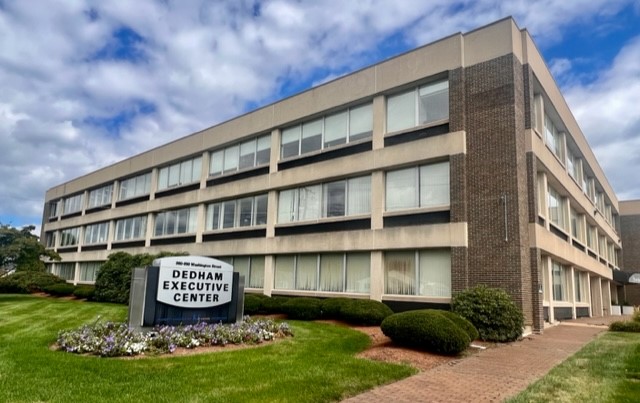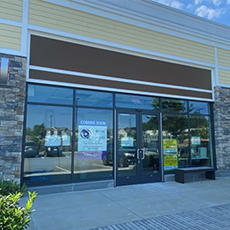Dry Eye Syndrome
Lexington Eye Associates is proud to offer customized services for dry eye in the Boston area through our Dry Eye Center of Excellence. Our team of doctors believes each patient has a unique cause for dry eye and therefore offers a multitude of treatment options and the most sophisticated procedures available in eye care today. Consultations are available in the Concord, Westford, and Lexington offices.
As a multi-specialty eye care practice, we feel maximizing the ocular surface is crucial in achieving the best surgical outcomes, optimal vision, contact lens comfort, and improving quality of life through relieving symptoms of dry eyes.
What Is Dry Eye Disease?
Dry eye disease is a chronic and multifactorial condition in which the eyes are not sufficiently moisturized. It causes disruption of the ocular surface and tear film, which can lead to symptoms of pain, burning, redness, excessive tearing, light sensitivity, and fluctuations in vision.
There are many causes for dry eye, including clogged meibomian glands, blepharitis, some medications, systemic conditions, and trauma to the eye. The most common type of dry eye is evaporative dry eye due to lack of oil in the tears. It is more common with age.
If you suffer from a scratchy, dry, or a burning sensation, you may be experiencing dry eye, and should be seen at Lexington Eye for testing and treatment.
Symptoms of Dry Eye
- Itching
- Redness
- Burning
- Pain
- Discharge
- Blurry vision
- Light sensitivity
- Glare driving at night
- Excessive tearing, especially in windy or cold conditions
- Tired or heavy eyes after reading, working on the computer, etc.
- Inability to wear contact lenses
The Ocular Tear Film
The tear film that coats the surface of the eye is made up of three unique layers: an outer oil layer, a water layer in the middle, and a mucus layer closest to the ocular surface. Glands near the eyelashes in the eyelids produce the outer, oily layer of the tear film. The main purpose of this oily layer is to decrease evaporation of the water layer. The middle, water layer is the largest of the three layers, and it makes up most of what we ordinarily think of as tears. This watery layer is produced by glands scattered through the conjunctiva and by the major tear gland, the lacrimal gland. The innermost layer consists of mucus produced by cells in the conjunctiva. This layer allows the watery layer to spread evenly over the surface of the eye and helps the eye to remain quite moist. Any defect in one or more of these layers can cause abnormalities in the ocular tear film.
Causes of Dry Eye Syndrome
Although dry eye syndrome may sound as though there is a lack of tears, several different physiologic processes can all produce very similar symptoms. For example, patients may have a deficiency in the amount of water layer produced, or they can have damage to the cells producing mucus, or they can have insufficient oils from the eyelids that allows for rapid evaporation of the water layer.
These problems can be caused by a wide variety of factors, including the natural aging process, over-the-counter and prescription medicines, contact lens wear, and environmental factors. Likewise, numerous diseases such as infections, autoimmune diseases, or other medical conditions can cause a dysfunction in the tear film.
What to Expect at Your Dry Eye Consultation
In order to properly diagnose dry eye, your eye doctor will ask questions regarding general health, medications, lifestyle, and specific symptoms. He or she will also perform various tests to determine the type of dry eye and appropriate treatment plan.
Diagnostic Testing
- SPEED Questionnaire: make sure to have this completed prior to your initial appointment
- Shirmer test: measures the quantity of tears
- Inflammadry: confirms presence of inflammation on the eyes
- Vital dyes: evaluates the integrity of the ocular surface and tear quality
- Slit lamp examination: evaluates the ocular surface and meibomian gland function
Treatment Options
Dry eye can be a difficult problem to completely cure and often becomes a chronic disease. The goal of treatment is to prevent the more serious complications and alleviate the bothersome symptoms of this eye condition.
Treatment often depends on the specific cause of the problem. Numerous over-thecounter as well as prescription medications can be used to alleviate symptoms. Likewise, procedures such as the placement of plugs in the tear drain can be performed in the office and provide significant relief of symptoms. As a widespread problem for many patients, there are currently several new prescription medications that are being investigated and have been showing great hope.
Treatments are customized for each person and depend on the type and severity of dry eye disease. Often times, more than one treatment is required to achieve maximal results and relief of symptoms.
- Dietary changes and/or supplements
- Medications
- Eyelid cleansing
- Lipiflow
- Amniotic membrane
- Punctal plugs
- Autologous serum tears
- Scleral contact lenses
Meet Our Team
The Lexington Eye Associates team is led by board-certified doctors considered to be leaders in the field of ophthalmology. Get to know us.
If you have questions or would like to book an appointment, please call (781) 876-2020 request your consultation.














